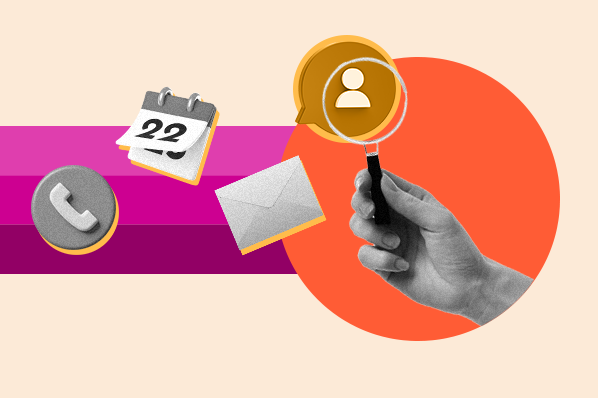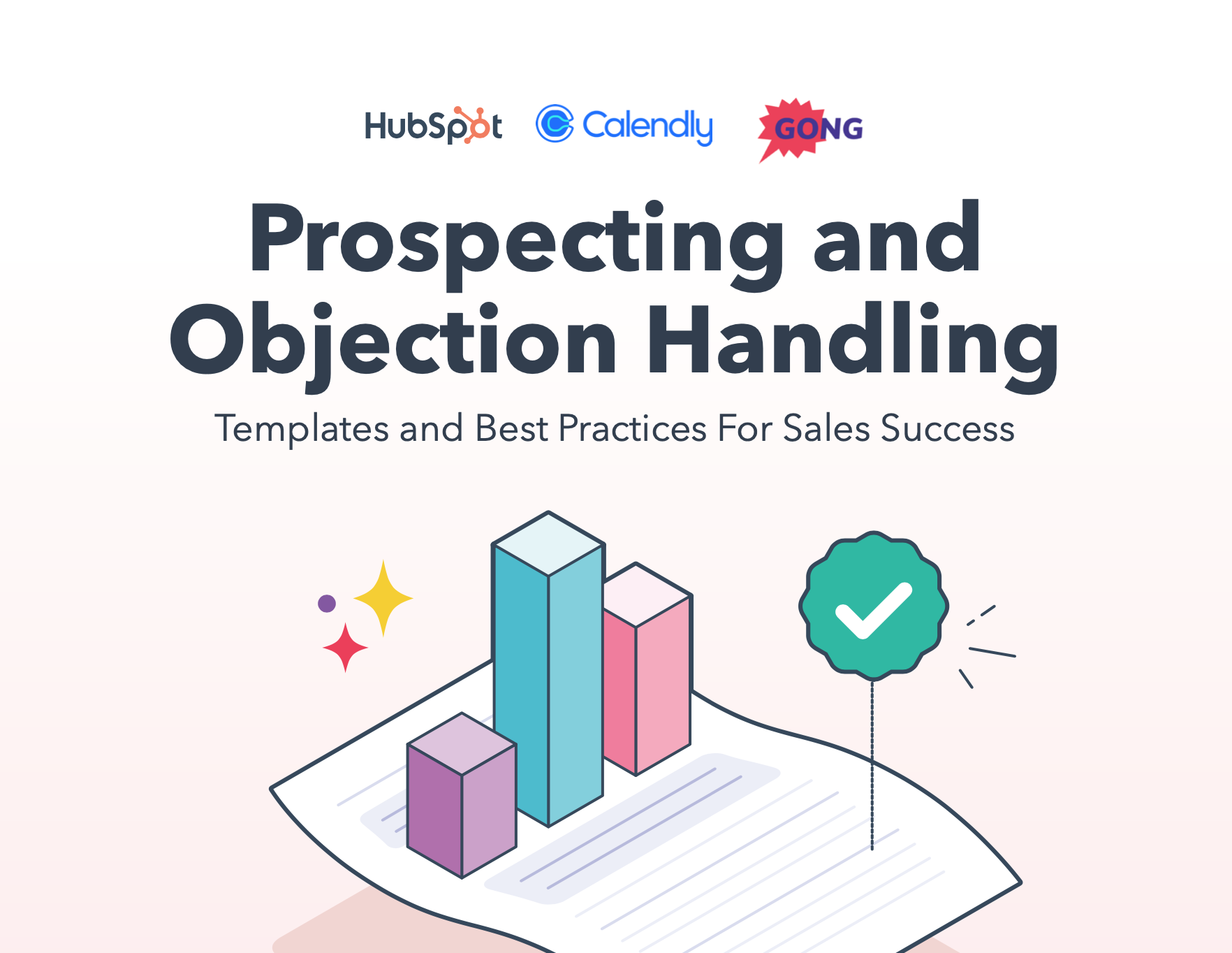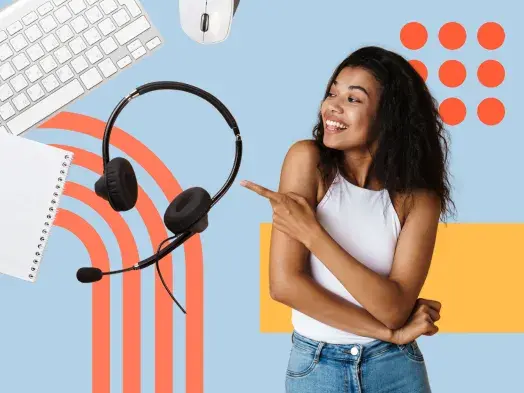How Many Touchpoints Are Necessary?
First, let's define "touchpoint."
To me, a touchpoint refers to a voicemail, email, or live conversation. I don't consider interactions through social media or a call with no voicemail to be touchpoints. Social media is a great tool for finding information, but I wouldn't recommend you use it for cold outreach. More on that later.
When it comes to the number of touchpoints necessary to guarantee prospecting success, there's plenty of evidence that suggests response rates rise with each outreach attempt. And statistically, across a broad spectrum of data, that number is around eight.
So, when you surpass eight touchpoints, the law of diminishing returns comes into play.
What does that mean?
The law of diminishing returns states that if one production factor (e.g., calls or emails) is increased while other factors are held constant, the output (e.g., open and response rates) will eventually decrease. In other words, a tenth touchpoint is not much more effective than an eighth. With this in mind, eight touches is a good benchmark number of touchpoints.
There are two important caveats to this number. First, every industry and buyer persona is different. While eight touches might be the right number for your company, seven or three might be right for another. This is why you must test and observe your response rates over time.
The second caveat is related to the first. In order to see accurate results from touchpoint testing, you must choose a number and stick to it with each and every single prospect you engage.
Most reps vary the number of attempts they make based on the particular buyer, but how will you discover the "magic" number for your territory or situation without consistent data? If you decide to work a lead, you must commit to making a set amount of touchpoints.
Reaching out multiple times won't work unless you vary your messaging. Every time you contact a prospect, provide value in a new way. For instance, you might send a short tip in one email and link to a helpful ebook in the second.
When Should I Make My Attempts?
In my experience, connect rates rise as the day, week, and month advances. According to this maxim, here are the ideal times to reach out:
- Time: 3 p.m. and later local time (call), five minutes before and after the hour (email)
- Day of week: Thursday and Friday
- Date: 28th -- 31st
Most salespeople make their prospecting calls early in the morning and early in the week. However, this is precisely the time when buyers are planning out their workload and prioritizing their tasks -- they don't have time for a sales call.
You'll have better success when the day is winding down, and the prospect has more bandwidth for an unexpected request.
In terms of email, you can write messages at any point in the day, but be careful not to send them until five minutes before or five minutes after the hour. Since you want your email to be no lower than 12 messages from the top, you'll need to send it at the precise moment when the buyer opens their inbox.
Five minutes before and after the hour is the span of time when buyers walk to and from meetings and check their email. Hitting "send" in this 10-minute window dramatically increases your chances of getting a response.
So, how should you distribute your touchpoints? Over the span of a month, most reps skew early. They might reach out two times the first day, once a few days later, once a week later, and then one final time a few weeks after that.
But this pattern communicates to the buyer that your request isn't urgent. To express urgency, I recommend skewing your touchpoints the opposite way. I wait quite a while after making my first attempt to follow up -- anywhere from 12 days to two weeks.
Here's what this schedule might look like:
- Day 0: First touchpoint
- Day 14: Second touchpoint
- Day 21: Third
- Day 25: Fourth
- Day 27: Fifth
- Day 28: Sixth
- Day 29 (in the morning): Seventh
- Day 29 (in the afternoon): Eighth
Now the buyer senses that my message is growing in urgency instead of decreasing.
What Types of Messages Should I Use?
Your prospecting message mix should be just that -- a mix. The specific divide between calls and emails should be determined by you and your manager based on what works best in your industry.
That said, in my experience, leaning on the phone slightly more than email generates the best results. For that reason, I recommend following a three calls / two emails split, but three emails / two calls is also acceptable.
What I don't recommend is all emails or no calls, or four calls and one email. Keep it as balanced as possible while playing to the preferences of your buyers.
Can I Use Social Media?
How can you use social media -- and use it well? I get this question a lot. Social media can be a great tool for prospecting if used correctly.
Social media is a great place to find triggers or events you can use to capture your prospect's attention. Since your aim is to get them to read your email, and you'll most likely have to send more than one email before that happens, you have to find varying topics of conversation to catch your prospect's attention.
Reaching out multiple times with the same copy and pasted email won't work, and your prospect will notice. Every time you contact a prospect, provide value in a new way. For instance, you might send a short congratulations about their recent new product launch in one email and comment on a recent blog post from their website in the second.
If you can skew your outreach earlier than later, make at least eight attempts with each and every prospect, and mix up your approach, I guarantee your connect rate will climb. Also remember to keep a close eye on how different times of day, types of message, and numbers of touchpoints affects your success, and fine-tune your strategy accordingly.
Looking for more tips? Check out Your SalesMBA® The Podcast for impactful, tactical, and engaging advice to help you close deals and crush your quota.
Sales Prospecting



.webp)






![How to Find Almost Anyone’s Email Address, Without Being Creepy [+Expert Tips]](https://53.fs1.hubspotusercontent-na1.net/hubfs/53/132_Find%20Email%20Address.jpg)

